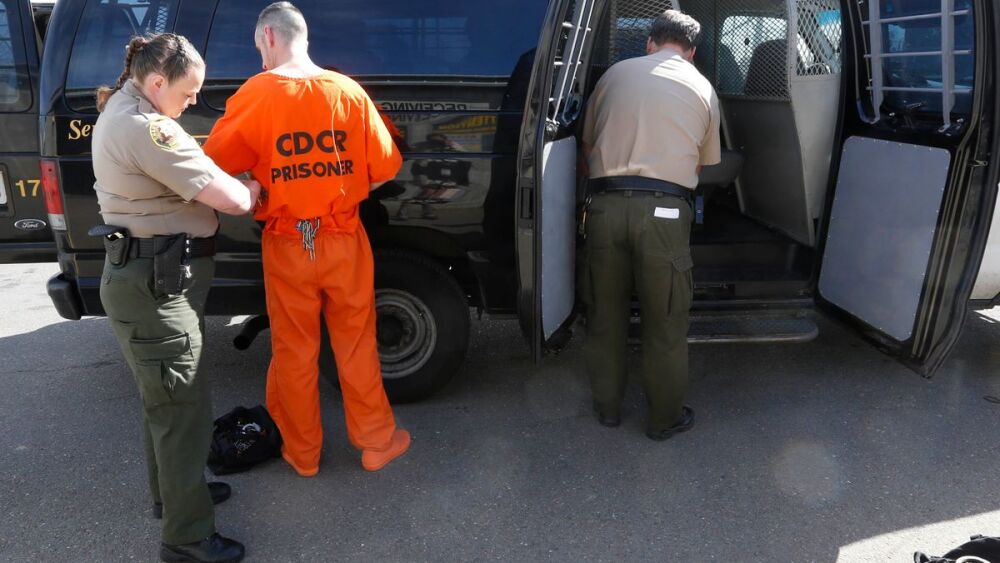By James Careless
Prisoner transport can be one of the more hazardous parts of a correctional officer’s job – but it doesn’t have to be. When vehicles are equipped with the right equipment, the risks are reduced for both officers and inmates.
Here are seven technologies that belong in every prisoner transport vehicle to cut down these dangers based on expert opinions from professionals in the corrections industry
1. Video cameras
It is standard operating procedure for prisoners to be physically isolated from officers in transport vehicles, and for those officers to be keeping their eyes on the road.
Therefore, having a multi-camera surveillance system (with microphones) installed in the prisoner compartment is a must. Such a system allows the officer(s) to check what’s going on in the prisoner area, and to record these events to an onboard digital video recorder (DVR) for later review/legal documentation.
Ideally, this technology should be a multi-camera system specifically built for corrections use, with the live camera feeds going to a multi-window monitor in the cab. Meanwhile, two-way microphones in both parts of the vehicle will allow officers to talk to prisoners when something happens, without having to pull the vehicle off the road and open the prisoner compartment.
To provide security around the vehicle, install a 360-degree external camera system with the feeds going to a second monitor in the cab (and being recorded on the DVR). A 360-degree camera system will allow the driver to detect possible attempts to intercept the vehicle from any direction and enable safer driving in general while on the road.
2. Remote GPS tracking and camera access
Using GPS tracking and mobile networks, corrections departments can know where their prisoner transport vehicles are. Add the capability to tap into the vehicles’ camera and microphone feeds remotely, and command can see and hear what is happening in their transport vehicles in real-time.
This kind of knowledge significantly enhances officer and public safety and helps to keep prisoners safe should a driving accident or medical emergency occur on the road.
3. Smartphone maps/apps for corrections
Ruggedized smartphones are available that provide maps and apps for first responders. When it comes to prisoner transport, these maps can tell officers the precise location of secure drop-off points and pass along any electronic documents/records that might be needed for specific transport assignments.
Since bathroom breaks happen, it makes sense to mark the location of police stations along the route so that prisoners can go to the washroom in secured facilities.
4. Satellite comms in remote areas
It is not wise for a prisoner transport vehicle to lose contact with dispatch, but it can happen when the vehicle passes through areas lacking radio/mobile coverage.
Jurisdictions whose prisoner transport vehicles encounter such issues should think seriously about installing satellite telephone handsets in their units. Satellite phones can bridge radio/mobile coverage gaps, at prices that are affordable if used only for important communications.
5. A portable defibrillator
A portable automated external defibrillator (AED) can help a corrections officer revive a prisoner who has experienced a sudden cardiac arrest, assuming that the officer has been trained and tested in its use beforehand. (Modern AEDs require minimal training to use.)
The AED should be mounted in the cab to keep it away from prisoners. Again, the officer(s) should be trained on how to use it and have access to a properly maintained first aid kit. Having the appropriate EMS/hospital contact is also recommended for immediate advice during medical emergencies.
6. prisoner inserts
If a corrections department is transporting various security levels of prisoners in the same vehicle, be sure to install an insert that divides the vehicle into separate compartments. Minimum security prisoners can travel side-by-side on the same bench. Maximum security prisoners can be isolated in individual compartments, to reduce their danger to officers, the public, and themselves.
7. A mini-fridge
Things can go wrong during a prisoner transport, dragging out the drive much longer than intended. Play it safe and put a plug-in mini-fridge in the cabin. It can hold bottles of water and basic food for the trip – providing necessary sustenance when delays occur.
NEXT: How to buy prisoner transport vehicles and inserts (eBook)
About the author
James Careless is a freelance writer with extensive experience covering law enforcement topics.












